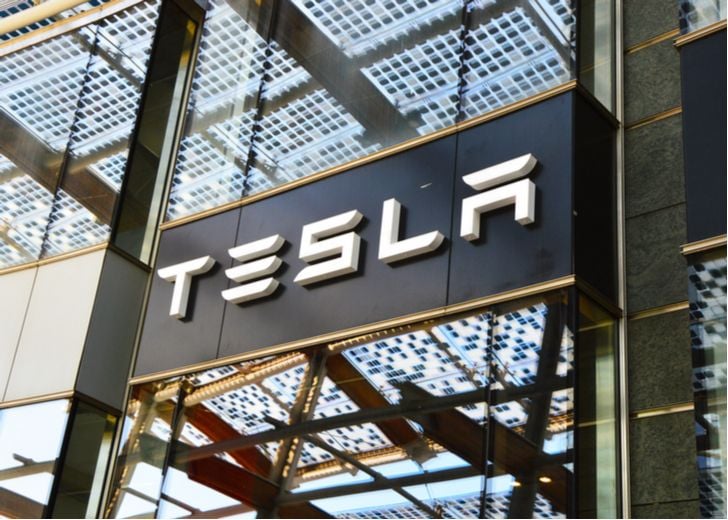Whew, what a month it’s been for Tesla (NASDAQ:TSLA). After the company’s better-than-expected earnings results, Tesla stock flew higher. It looked bound for $400 per share and a massive short squeeze. But then the whole go-private situation ensued, before being taken off the table a few weeks later.
The chain of events poured cold water all over that great earnings-fueled rally. Shares closed near $300 last Friday, the last day August, capping a wild and volatile month. On Monday, shares fell by more than 4% to sub-$290.
The move is threatening to take out the lows from last month and comes on the heels of two things: A report that Tesla missed its August production goal of making 6,000 Model 3s a week by month’s end and as Goldman Sachs analysts resume bearish coverage of the stock.
Goldman Sachs (NYSE:GS) had removed its coverage of the stock as it and other banks had become advisors to the Tesla go-private deal. Once that deal was scrapped though, analyst David Tamberrino eventually resumed his coverage. He slapped a sell rating on Tesla stock and a $210 price target.
From Monday’s levels, that represents another $80 per share of downside, or more than 27.5%.
Tamberrino argues that, among other things, increasing competition in the electric vehicle (EV) space will make life more difficult for Tesla.
Sizing Up Tesla Stock
Is that a reasonable catalyst to sell Tesla stock? Theoretically, it is. With increasing competition, there is less potential revenue available to Tesla. That will (in theory) crimp sales and thus crimp profits should margins hold steady. With lower profits and cash flow, servicing its poor balance sheet will only become harder.
That said, how much is the competition really set to increase? Mercedes (OTCMKTS:DDAIF) just introduced the EQC all-electric vehicle. Between Mercedes and General Motors (NYSE:
GM), the two plan to bring almost two dozen all-electric models to global markets between now and 2023.
Don’t forget Porsche either, part of the Volkswagen (OTCMKTS:VLKAY) family. The Porsche Taycan is in the works and will come in late 2019 or early 2020. Bentley, Lamborghini, Audi and others are also in the Volkswagen family. Meaning traction with the Taycan could lead to even more electric vehicles from other brands within the same company.
But what does this mean for Tesla, specifically?
The Taycan looks gorgeous and its specs are solid. But Porsche already said it plans to produce just 20,000 in the first year. So not only does Tesla have the rest of 2018, but essentially all of 2019 too. On top of that, it will only see competition of 20,000 Taycan’s in 2020.
Mercedes and GM don’t have many models out right now and a bulk of its planned vehicles will likely come after 2020.
That’s not to say Tesla shouldn’t position itself accordingly or that competition won’t eventually threaten Tesla’s market leadership position in the EV market. Only that I wouldn’t use it as a negative catalyst at this exact moment. That said, there are plenty of other issues with Tesla stock right now.
Trading Tesla Stock

Click to Enlarge
What’s not to like?
For one, its balance sheet is pretty bad. However, while you wouldn’t know it based on the stock’s price action, the balance sheet could improve over the next few months. Tesla management has predicted numerous times that it would be cash flow positive and GAAP profitable in Q3 and Q4.
A big part of that is the company’s plan to produce between 50,000 and 55,000 Model 3s in Q3 and likely more in Q4. While Tesla missed its 6,000-a-week run-rate goal for August, it’s still well on its way to hitting its quarterly target.
That’s not even including the more-than 20,000 units it will produce of the Model S and X. Throw in the fact that Tesla is only producing high-priced versions of the Model 3 right now and profitability seems quite likely.
It will need something to drive its stock price back up above $360 and keep it there by the time February rolls around. That’s when it has a round of convertible debt due. Below that significant mark (purple line on the chart) and Tesla has to pay back the bonds with cash, rather than with stock.
Before that’s even a thought, Tesla needs to get back above $300. Below $290 and shares could head to $280 and possibly $250 if support doesn’t hold up. On the upside, it needs to get back into and preferably above the $300 to $310 range (blue box). From there, it needs to get through two key trend-lines (blue lines).
That’s a lot of work. See it how it handles $290 first.
Bret Kenwell is the manager and author of Future Blue Chips and is on Twitter @BretKenwell. As of this writing, Bret Kenwell was long GM.
